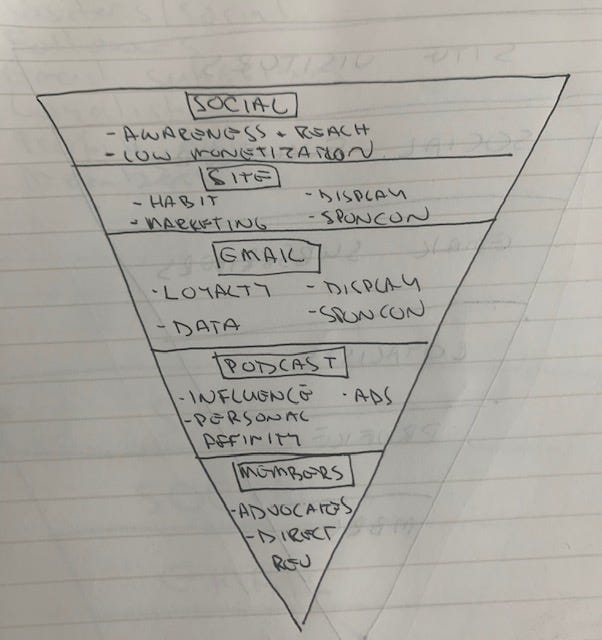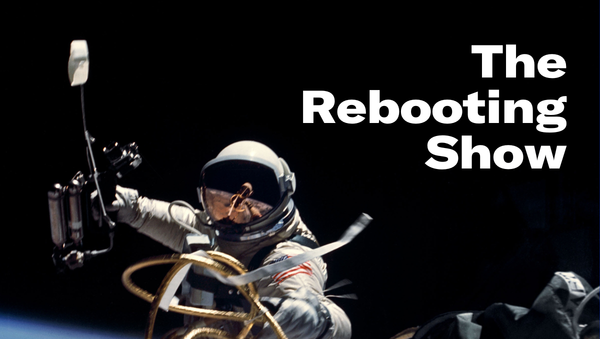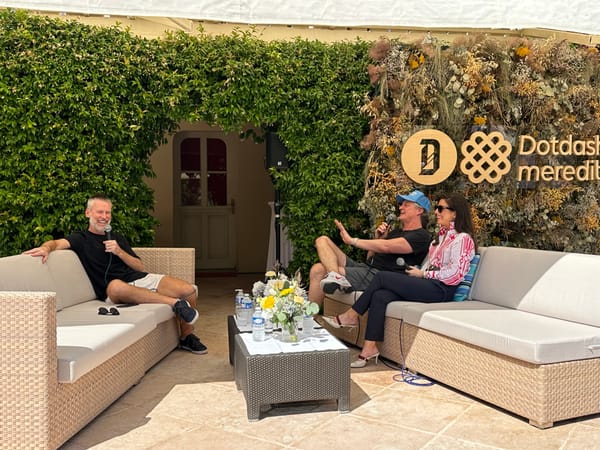Building a membership funnel
Getting people to pay for content is a courtship
This week, I’m tackling the issue of building membership funnels, as well as some thoughts on why B2B media has built-in advantage, user experience atrocities caused by bad business models and the risky calculus behind steep discounts for subscriptions. As always, please send me an email with your thoughts, although I have to confess I’m a spotty email correspondent, something I’m going to improve in 2021. If you’re reading this and not yet a subscriber, please sign up.
Building a member funnel
Over a decade, I spent an inordinate amount of time drawing funnels -- and sometimes turning them into pyramids. I like the simplicity of them in cutting through the fog that often surrounds what you’re trying to accomplish in the business.
Every media company’s funnel is going to be different since the publishing industry is not a monolith. There are many types of publishers. But for an emerging class of DTC media businesses, from independent creators to micro-media outfits to business brands, a basic funnel is an important strategic tool to move people from their introduction to the brand to habit to loyalty and eventually to membership. It goes without saying, but critical to all of this is simply creating a product worth paying for — and doing it day after day, week after week, month after month.
Here’s an example I often used:





